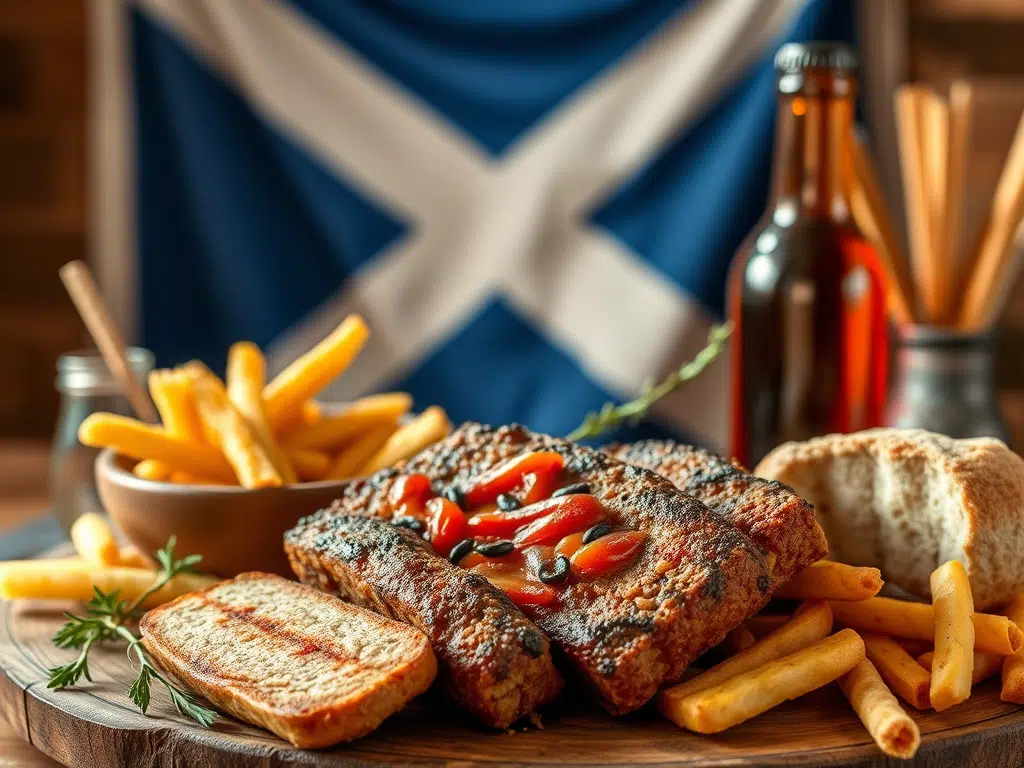Skilltopia’s online food hygiene Level 2 and Level 3 courses cover Scottish Food Hygiene Laws. Food hygiene is a cornerstone of safe food preparation in Scotland, governed by strict regulations to protect consumers from foodborne illnesses. These laws, overseen by Food Standards Scotland (FSS), set out specific requirements for cooking temperatures, cooling, and storage to eliminate harmful bacteria like salmonella and E. coli. This educational guide details Scotland’s food hygiene laws, with a focus on cooking temperature standards, and compares them to those in the rest of the UK (England, Wales, Northern Ireland) to clarify key differences for food businesses operating in 2025.

Overview of Scottish Food Hygiene Laws
Food hygiene in Scotland is regulated under the Food (Scotland) Act 2015 and The Food Hygiene (Scotland) Regulations 2006. These laws require food businesses to implement safe practices, including proper cooking temperatures, to comply with the Food Hygiene Information Scheme (FHIS). The FHIS rates businesses as “Pass,” “Improvement Required,” or “Exempt” based on compliance with hygiene standards, including temperature control and adherence to Hazard Analysis and Critical Control Point (HACCP) principles. Unlike the rest of the UK, where the Food Standards Agency (FSA) oversees the Food Hygiene Rating Scheme (FHRS) with a 0–5 rating, Scotland’s FHIS focuses on legal compliance rather than numerical scores.
Cooking Temperature Standards: Scotland vs. Rest of UK
Cooking food to the correct temperature is essential to ensure safety by eliminating harmful bacteria. Scotland’s regulations, particularly for reheating, are stricter than those in the rest of the UK. The table below compares cooking and reheating temperature requirements between Scotland (FSS) and the rest of the UK (FSA), as outlined in their respective regulations.
| Aspect | Scotland (FSS) | Rest of UK (FSA: England, Wales, Northern Ireland) |
|---|---|---|
| General Cooking Temperature | Core temperature of 75°C for 30 seconds for high-risk foods (e.g., poultry, pork, burgers, sausages). Visual checks: no pink meat, clear juices. | Core temperature of 70°C for 2 minutes or equivalent (e.g., 75°C for 30 seconds, 86°C instantly). Visual checks: no pink meat, clear juices for poultry and minced meats. |
| Reheating Temperature | Legally required to reach 82°C for reheated food served immediately or for sale, per The Food Hygiene (Scotland) Regulations 2006. | No specific legal temperature; food must be “steaming hot” (typically 70°C for 2 minutes or equivalent). |
| Poultry and Minced Meats | 75°C core temperature in the thickest part (e.g., leg for whole chicken). No pink meat, clear juices. | 70°C for 2 minutes or equivalent (e.g., 75°C for 30 seconds). No pink meat, clear juices. |
| Whole Cuts (Beef, Lamb) | Use a clean food thermometer in the centre or thickest part. Visual cues as secondary checks. | Can be served rare if the surface is sealed. Rolled joints require 70°C for 2 minutes or equivalent. |
| Fish and Offal | Raw fish and offal (e.g., liver) must reach 75°C, steaming hot throughout. | Raw fish and offal must reach 70°C for 2 minutes or equivalent, steaming hot throughout. |
| Frozen Vegetables | Cooked thoroughly to 75°C to kill bacteria like Listeria, per packet instructions. | Cooked thoroughly to 70°C for 2 minutes or equivalent, per packet instructions. |
| Verification Method | Use a clean food thermometer in the thickest part. Visual cues (no pink meat, clear juices) as backup. | Use a clean food thermometer in the center or thickest part. Visual cues as secondary checks. |
Key Differences in Cooking Temperatures
- Reheating Requirements: Scotland mandates a minimum of 82°C for reheated food served immediately or for sale, a legal requirement under The Food Hygiene (Scotland) Regulations 2006. The rest of the UK has no specific legal reheating temperature, recommending food be “steaming hot” (typically 70°C for 2 minutes).
- Cooking Standards: Scotland requires a core temperature of 75°C for 30 seconds for high-risk foods, while the rest of the UK allows 70°C for 2 minutes or equivalent, offering flexibility in time-temperature combinations.
- Practical Implications: Scottish kitchens must use precise temperature monitoring, especially for reheating dishes like soups or curries, to meet the 82°C threshold, whereas the rest of the UK can rely on visual checks alongside thermometers.
Additional Scottish Food Hygiene Requirements
Beyond cooking temperatures, Scottish food hygiene laws emphasise:
- Cooling and Storage: Food must be cooled to 8°C or below within 1–2 hours after cooking to prevent bacterial growth. Large joints of meat require careful monitoring to meet this standard.
- HACCP Compliance: Businesses must implement HACCP plans to identify and control food safety hazards, including temperature control and cross-contamination prevention (e.g., using colour-coded equipment: red for raw meat, blue for fish).
- Record-Keeping: Detailed records of temperature checks and cooling processes are required to demonstrate compliance during FHIS inspections.
- Staff Training: Food handlers must be trained in safe practices, including proper use of thermometers and adherence to temperature controls.
Conclusion: Ensuring Compliance with Scottish Food Hygiene Laws
Scottish food hygiene laws, governed by The Food Hygiene (Scotland) Regulations 2006 and overseen by Food Standards Scotland, set rigorous standards to ensure consumer safety. The mandatory 82°C reheating temperature and 75°C cooking requirement for high-risk foods distinguish Scotland from the rest of the UK’s more flexible 70°C guidelines. By understanding these regulations, using proper temperature verification methods, and implementing HACCP principles, food businesses can maintain compliance and protect customers from foodborne illnesses. Staying informed about these requirements is essential for operating a safe and successful kitchen in Scotland in 2025.






